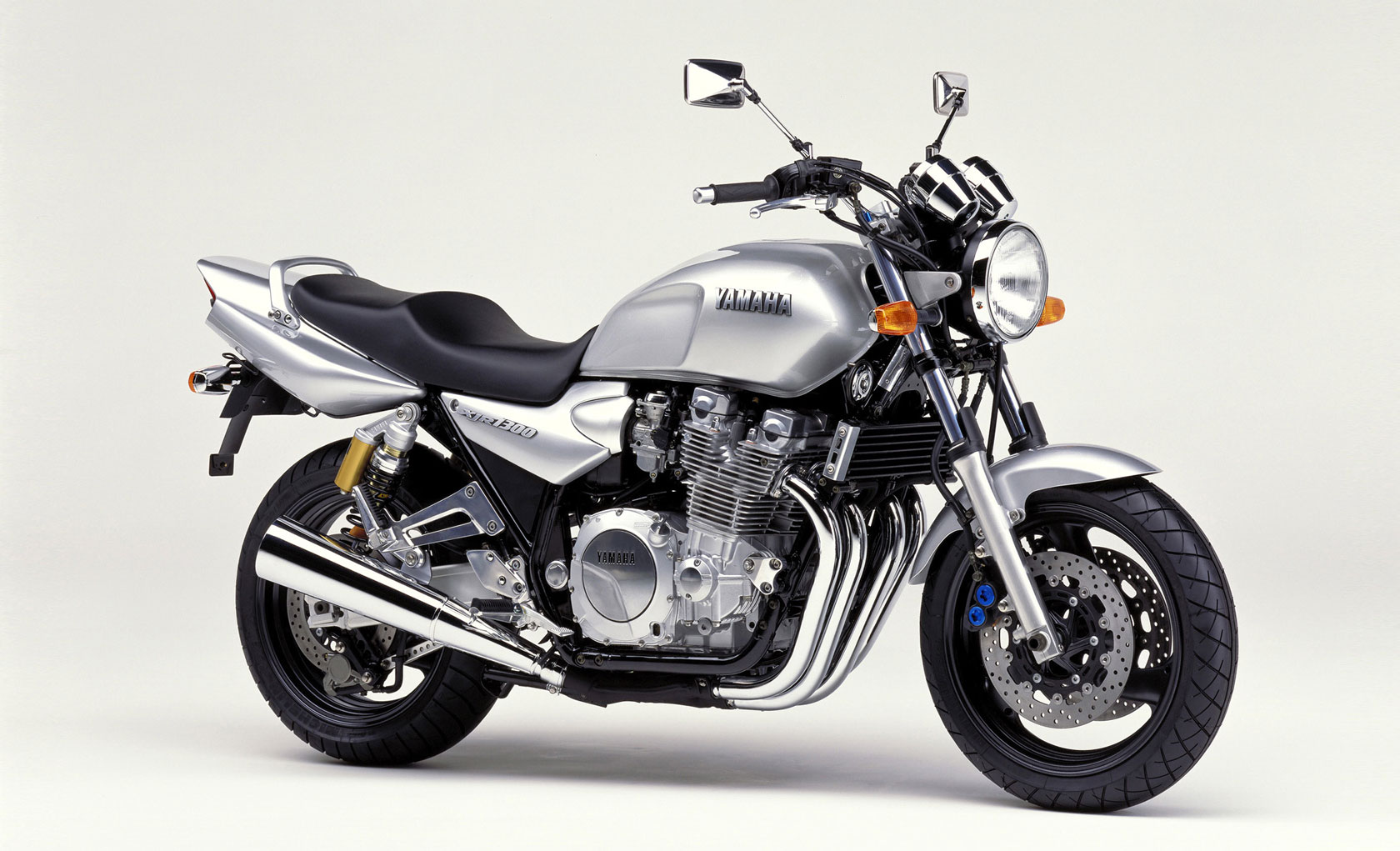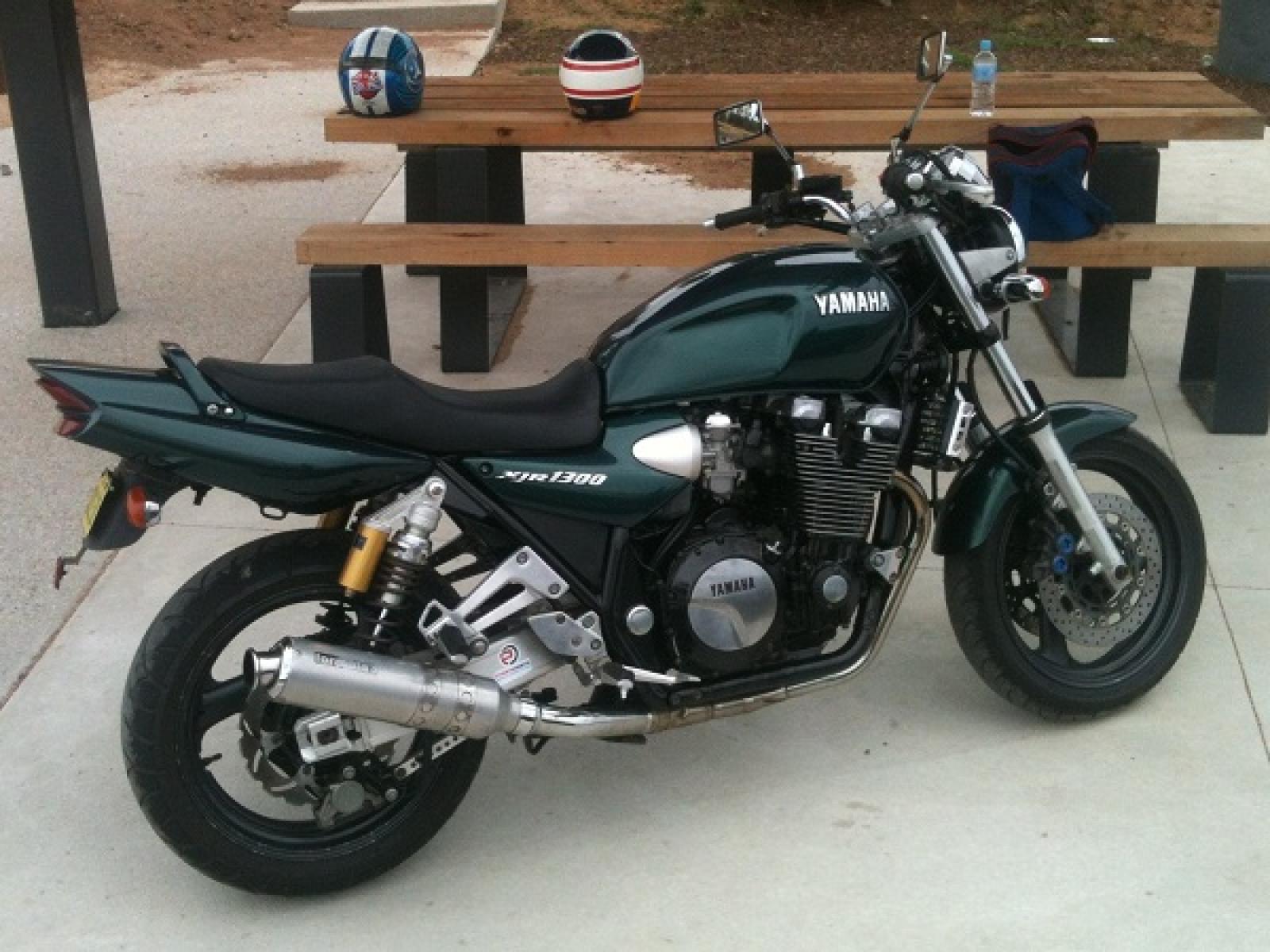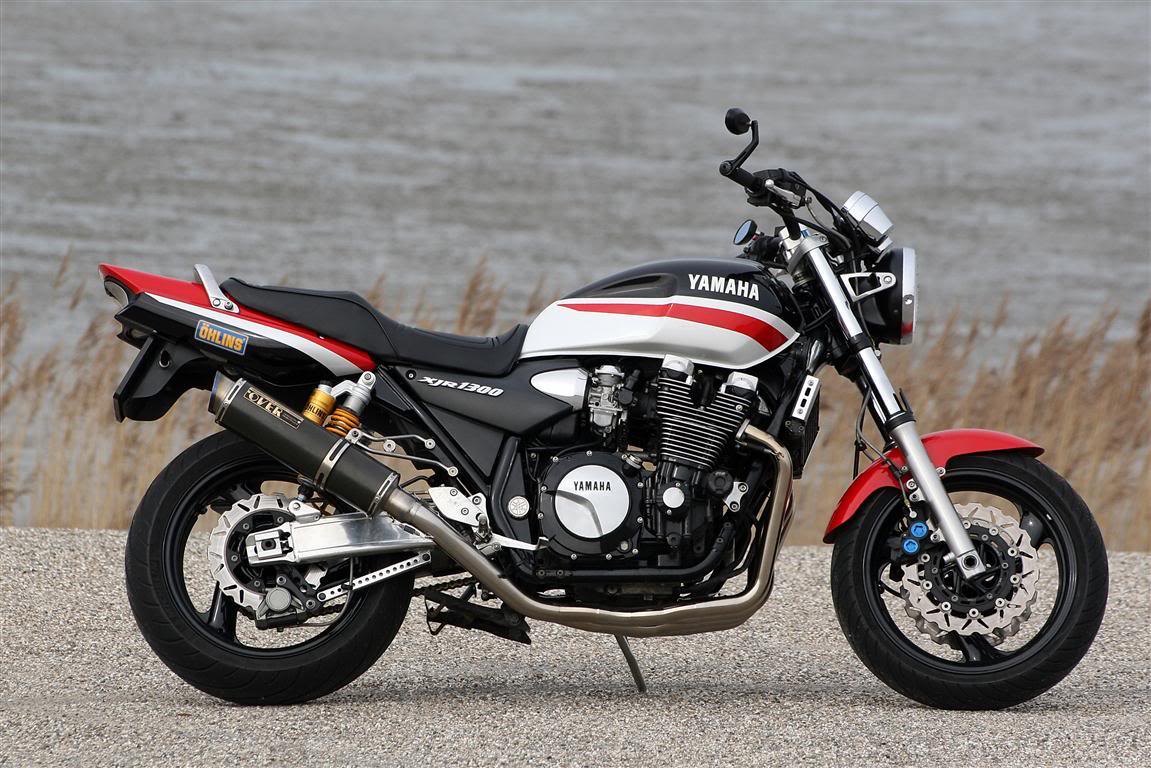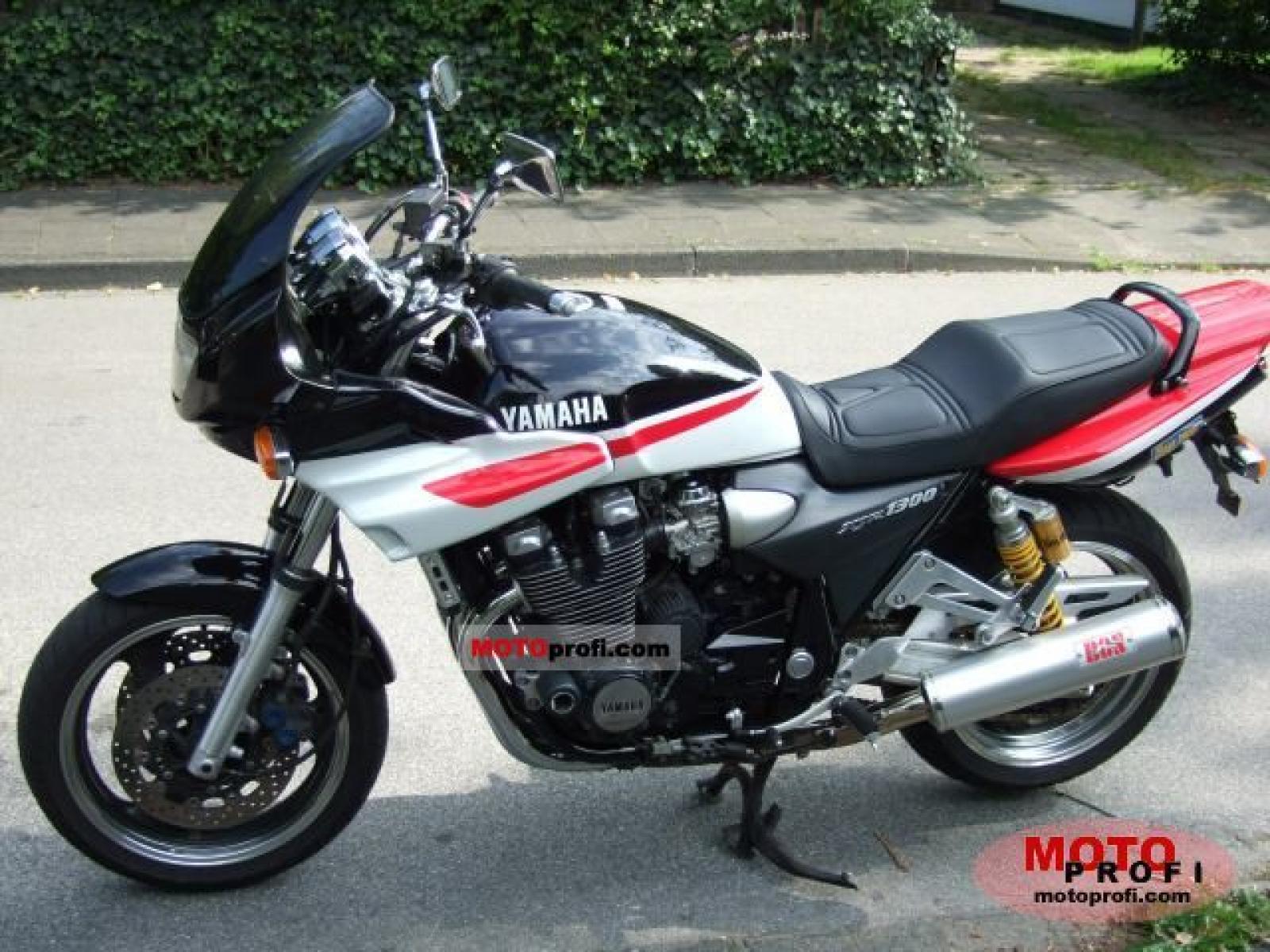Still Chasing the Rumble: Why XJR 1300 Owners Are Still Obsessed with the 1999 Yamaha Specs
For motorcycle enthusiasts, certain machines become more than just a means of transport; they evolve into legends. They represent a specific era, a certain philosophy of engineering, and a feeling that resonates deep within the rider. The Yamaha XJR 1300, particularly the models from the late 1990s, is undoubtedly one such legend. While modern motorcycles boast cutting-edge technology and performance, the enduring fascination with the 1999 XJR 1300’s specifications speaks volumes about its timeless appeal.
This isn’t just a story about a motorcycle; it’s a story about a feeling. It’s about the visceral connection between rider and machine, the raw power delivered with a satisfying rumble, and the enduring beauty of classic design. So, why are owners, even decades later, still so captivated by the 1999 Yamaha XJR 1300?
What is the XJR 1300?
The XJR 1300, first introduced in 1998, is a classic example of a “retro” motorcycle. It’s a modern motorcycle, but with a distinct nod to the past. Its design draws heavily on the iconic styling of the Yamaha XJ series from the 1970s and 80s, particularly the XJ900. This “retro” styling combined with potent performance made it an instant hit with riders seeking a blend of nostalgia and modern reliability.
At its core, the XJR 1300 is a muscle bike, a naked streetfighter with a powerful heart. It’s characterized by:
- Air-cooled, inline-four engine: This engine configuration is a cornerstone of the XJR’s appeal. The air-cooling provides a clean, uncluttered aesthetic and contributes to the bike’s raw, mechanical feel.
- Classic styling: Round headlight, exposed engine, chrome accents, and a comfortable, upright riding position all hark back to a golden age of motorcycling.
- Robust build quality: The XJR was built to last, known for its reliability and durability.
- Strong performance: While not the fastest bike on the road, the XJR 1300 delivered impressive torque and a satisfying power delivery, making it a joy to ride in various conditions.
Why are the 1999 Specs so Important?
The 1999 model year is often considered a benchmark for the XJR 1300. While subsequent models saw minor updates and refinements, the 1999 version represents a sweet spot:
- The Foundation: It’s the foundation upon which the XJR’s reputation was built. It solidified the bike’s character and established the design language that would define the model for years to come.
- Raw Power and Feel: The 1999 engine, with its specific bore and stroke, delivered a particularly engaging riding experience. The power delivery was smooth and predictable, yet offered plenty of punch when needed. The air-cooled engine provides a distinct sound and feel that many modern bikes lack.
- The “Last of the Old School”: In an era of rapidly evolving motorcycle technology, the 1999 XJR 1300 represented a more traditional approach to engineering. It was a motorcycle that prioritized the rider’s connection to the machine, offering a pure, unadulterated riding experience.
- Collectibility and Value: Due to their enduring popularity and relative scarcity, well-maintained 1999 XJR 1300s are highly sought after by collectors and enthusiasts, often commanding premium prices.
- Simplicity and Maintainability: The 1999 model’s relative simplicity makes it easier to maintain and customize, further adding to its appeal for those who enjoy wrenching on their own bikes.
Background Context: A Shift in the Motorcycle Landscape
To understand the significance of the 1999 XJR 1300, it’s important to consider the motorcycle landscape of the time. The late 1990s saw a surge in sportbike popularity, with manufacturers focusing on high-performance machines with aggressive styling. While these bikes offered incredible performance, they often came at the expense of comfort and accessibility.
The XJR 1300, with its classic styling, comfortable riding position, and accessible power, offered a refreshing alternative. It catered to riders who appreciated a more relaxed riding experience, a connection to the machine, and the timeless appeal of a classic design. It was a counterpoint to the increasingly specialized world of modern motorcycles.
Moving Forward: Exploring the Obsession
This introduction sets the stage for a deeper dive into the specific specifications that make the 1999 Yamaha XJR 1300 so captivating. We’ll examine the engine’s key figures, delve into the chassis and suspension, and explore why these elements combine to create a truly special riding experience. We’ll also examine the enduring legacy of the XJR 1300 and why its owners continue to cherish this iconic motorcycle. Get ready to discover the reasons behind the enduring obsession!
XJR 1300: Why Owners Still Obsess Over the 1999 Yamaha Specs
The 1999 Yamaha XJR 1300 isn’t just a motorcycle; it’s a cult classic. Decades after its initial release, owners remain deeply devoted to this air-cooled, inline-four powerhouse. This obsession isn’t just about nostalgia; it’s rooted in the specific specifications and design choices Yamaha made in that 1999 model. Let’s delve into the key elements that contribute to this enduring fascination.
I. The Heart of the Beast: The 1999 Engine Specs
The core of the XJR 1300’s appeal lies in its robust, reliable, and characterful engine. The 1999 model, in particular, boasts specifications that many owners consider the sweet spot for power, usability, and longevity.
Engine Type: Air-cooled, DOHC, Inline-Four: This configuration is a cornerstone of the XJR’s appeal.
- Air-cooling: Simple and reliable. Eliminates the complexity and potential issues of a liquid cooling system (leaks, pump failures). Provides a raw, unfiltered engine experience.
- DOHC (Double Overhead Camshaft): Allows for precise valve timing and efficient breathing, contributing to a wide powerband and strong top-end performance.
- Inline-Four: Delivers a smooth and balanced engine character, with a satisfying exhaust note. Offers a narrower profile compared to V-engines, contributing to the bike’s handling.
Displacement: 1251cc: This generous displacement is the key to the XJR’s abundant torque and effortless acceleration.
- Torque is King: The large engine produces a significant amount of torque low in the rev range. This means strong pull from virtually any speed, making it ideal for street riding, overtaking, and cruising. Owners often highlight the “roll-on” power, the ability to accelerate rapidly without needing to downshift.
- Usability: The ample torque makes the bike forgiving and easy to ride in various conditions. It doesn’t require constant gear changes, making it a comfortable and relaxed machine.
Power Output (Approximate): 98 hp (73 kW) @ 8,000 rpm: While not the most powerful motorcycle of its era, the XJR 1300’s power delivery is well-suited for real-world riding.
- Usable Power: The power curve is relatively flat, meaning the bike feels strong throughout the rev range. This contributes to its versatility and makes it enjoyable to ride in a variety of situations.
- Reliability: The engine isn’t stressed to produce extreme power figures. This contributes to its legendary reliability and longevity.
Torque Output (Approximate): 100 Nm (74 lb-ft) @ 6,500 rpm: This is the figure that truly defines the XJR 1300’s character.
- Instant Gratification: The high torque figure provides immediate response from the throttle.
- Effortless Cruising: Enables relaxed cruising at highway speeds without feeling underpowered.
Carburetion: The 1999 model, and many subsequent years, used carburetors.
- Simplicity and Maintainability: Carburetors are mechanically simpler than fuel injection systems. This makes them easier to understand, diagnose, and maintain for the home mechanic.
- Distinct Character: Carburetors contribute to the bike’s raw, unfiltered feel. They provide a more direct connection between the throttle and the engine’s response.
- Customization: Carburetors are readily adaptable to aftermarket modifications like exhaust systems and air filters, allowing owners to fine-tune the engine’s performance and sound.
II. Chassis, Suspension, and Handling: The Balanced Package
The XJR 1300’s appeal isn’t just about the engine; it’s the combination of the engine with a well-sorted chassis that contributes to its timeless charm.
Frame: Tubular steel double cradle frame. This provides a strong and stable foundation for the bike.
- Classic Design: The frame’s simplicity and visual appeal align with the bike’s retro aesthetic.
- Robustness: Offers excellent torsional rigidity, contributing to predictable handling.
Suspension:
- Front: Telescopic forks (non-adjustable or only preload adjustable on some models). While not the most sophisticated, they provide adequate damping for street riding.
- Rear: Twin shock absorbers, often with preload adjustability. This setup contributes to the bike’s classic look and provides a comfortable ride.
- Benefits: The suspension is tuned for a comfortable ride on various road surfaces. The twin-shock setup provides a distinctive feel and contributes to the bike’s retro style.
Brakes: Disc brakes front and rear. Adequate stopping power for the bike’s performance, although they lack the advanced technology of modern bikes.
- Simplicity: Easy to maintain and service.
- Performance: Provide sufficient braking power for the bike’s intended use.
Handling: The XJR 1300 offers a balanced and predictable riding experience.
- Comfortable Riding Position: Upright riding position with a wide handlebar provides excellent control and comfort for long rides.
- Agile for its Size: Despite its weight, the XJR 1300 handles surprisingly well, offering a stable and engaging ride.
III. Design and Aesthetics: The Retro Appeal
The XJR 1300’s design plays a crucial role in its enduring appeal.
Retro Styling: The bike’s design is a clear homage to classic motorcycles, particularly the cafe racer style.
- Timeless Look: The round headlight, sculpted fuel tank, and exposed engine create a visually appealing package that has aged gracefully.
- Customization Potential: The retro style lends itself well to customization, allowing owners to personalize their bikes with various aftermarket parts and accessories.
Exposed Engine: The air-cooled engine is a visual centerpiece, proudly displayed for all to see.
- Mechanical Beauty: The engine’s fins and polished surfaces are a testament to the beauty of engineering.
- Easy Maintenance: The exposed engine makes it easier to access components for maintenance and repairs.
Build Quality: Yamaha’s reputation for build quality is evident in the XJR 1300.
- Durability: The bike is built to last, with robust components and a high level of fit and finish.
- Longevity: The XJR 1300 is known for its reliability and its ability to withstand the test of time.
IV. Benefits and Why Owners Obsess:
The combination of these factors – the powerful engine, balanced handling, classic design, and Yamaha’s reputation for quality – creates a motorcycle that owners are genuinely passionate about. Here’s a breakdown of the key benefits and reasons for the obsession:
- Effortless Performance: The strong torque and usable power make the XJR 1300 a joy to ride in various conditions. Overtaking is a breeze, and cruising is a comfortable experience.
- Reliability and Longevity: The engine’s air-cooled design and Yamaha’s build quality contribute to the bike’s legendary reliability. Owners can expect years of trouble-free riding.
- Classic Aesthetics: The retro design is timeless and visually appealing. The bike’s classic lines and exposed engine turn heads wherever it goes.
- Customization Potential: The XJR 1300 is a favorite among customizers. Owners can easily personalize their bikes with various aftermarket parts and accessories.
- Community and Support: The XJR 1300 has a strong online community and a dedicated following. Owners can share information, tips, and advice, fostering a sense of camaraderie.
- Simplicity and Maintainability: The bike’s mechanical simplicity makes it easy to maintain and service. Owners can perform many maintenance tasks at home, saving money and gaining a deeper understanding of their machine.
- The “Feel” Factor: The XJR 1300 provides a raw, unfiltered riding experience. The combination of the engine’s character, the bike’s handling, and the feedback from the road creates a sense of connection that many modern bikes lack.
- Affordability (Relatively): Compared to modern high-performance motorcycles, XJR 1300s are often available at a reasonable price, making them an accessible classic.
V. Important Details and Considerations:
- Availability of Parts: While the XJR 1300 is a reliable machine, it’s important to consider the availability of replacement parts. While many parts are still readily available, some specialized components may be harder to find.
- Maintenance: Regular maintenance, including oil changes, valve adjustments, and carburetor cleaning, is essential to keep the bike running smoothly.
- Riding Experience: The XJR 1300 is a relatively heavy motorcycle. New riders should be aware of its weight and handling characteristics.
- Technology: The XJR 1300 lacks the advanced technology of modern bikes, such as ABS, traction control, and adjustable suspension.
- Fuel Consumption: The large engine can consume a fair amount of fuel, especially when ridden aggressively.
VI. Conclusion:
The 1999 Yamaha XJR 1300 is more than just a motorcycle; it’s a testament to the enduring appeal of classic engineering and timeless design. Its powerful engine, balanced handling, retro aesthetics, and Yamaha’s reputation for quality combine to create a motorcycle that owners are deeply passionate about. The XJR 1300 represents a simpler time in motorcycling, a time when the focus was on the raw experience of riding and the connection between the rider and the machine. Its enduring popularity is a testament to the enduring quality of this air-cooled inline-four legend. The obsession is well-deserved.
XJR 1300 Owners Are Still Obsessed: A Comprehensive FAQ (1999 Specs Focus)
This FAQ is dedicated to the iconic 1999 Yamaha XJR 1300, a motorcycle that still holds a special place in the hearts of its owners. We’ll focus on the specifications that make this bike so beloved, addressing common questions and busting some myths.
General Questions:
1. What makes the 1999 Yamaha XJR 1300 so special?
The 1999 XJR 1300 is revered for its raw, air-cooled inline-four engine, classic retro styling, robust build quality, and user-friendly riding experience. It represents a time when motorcycles prioritized character and feel over pure performance numbers. The 1999 model, being the first year in many markets, holds a certain cachet for its original design and often better availability.
2. What are the main specifications of the 1999 XJR 1300?
- Engine: 1251cc, air-cooled, inline-four, DOHC
- Bore & Stroke: 79mm x 63.8mm
- Compression Ratio: 9.7:1
- Carburetion: 4 x Mikuni BDST38
- Transmission: 5-speed
- Horsepower: Approximately 100 hp (depending on market)
- Torque: Approximately 75 lb-ft (depending on market)
- Weight (Dry): Around 230 kg (507 lbs)
- Fuel Tank Capacity: 21 Liters (5.5 US gallons)
- Frame: Steel double cradle
- Suspension (Front): Telescopic forks, adjustable preload
- Suspension (Rear): Dual shocks, adjustable preload and rebound damping
- Brakes: Dual front disc brakes, single rear disc brake
3. Where was the 1999 XJR 1300 originally sold?
The 1999 XJR 1300 was primarily sold in Europe and Japan. Its popularity led to later releases in other markets.
4. Is the 1999 XJR 1300 a good beginner bike?
While the XJR 1300 is relatively manageable, its size, weight, and powerful engine can be overwhelming for complete beginners. It’s best suited for riders with some experience. The smooth power delivery helps, but the bike’s mass demands respect.
5. What are the common problems with the 1999 XJR 1300?
Like any older bike, the 1999 XJR 1300 can develop issues. Common concerns include:
- Carburetor issues: Sticking floats, needing synchronization, jetting issues.
- Electrical problems: Aging wiring, faulty connectors, regulator/rectifier failures.
- Oil leaks: From gaskets and seals, especially as they age.
- Suspension wear: Fork seals, shock performance degradation.
- Rust: Especially in areas exposed to the elements.
6. Are parts still available for the 1999 XJR 1300?
Yes, parts are generally available. While some OEM (Original Equipment Manufacturer) parts might be harder to find, aftermarket parts are readily available. You can find parts from various online retailers, Yamaha dealerships, and specialist motorcycle shops.
7. How much does a 1999 XJR 1300 cost?
The price varies widely depending on condition, mileage, location, and modifications. Expect to pay anywhere from $3,000 to $8,000+ (USD) for a well-maintained example. Be sure to factor in potential maintenance costs when considering a purchase.
8. Is the 1999 XJR 1300 a good investment?
While not an investment in the traditional sense, well-maintained examples of the 1999 XJR 1300 are holding their value well and even appreciating in some cases, particularly in excellent, original condition. This is a testament to their enduring appeal.
Engine & Performance:
9. How reliable is the 1999 XJR 1300’s engine?
The 1251cc inline-four engine is known for its robust design and reliability. With proper maintenance (oil changes, valve adjustments, etc.), it can last for hundreds of thousands of kilometers.
10. How fast does the 1999 XJR 1300 go?
The top speed is around 130-140 mph (210-225 km/h), but the bike’s strength lies in its strong mid-range torque and comfortable cruising ability.
11. What kind of fuel economy can I expect?
Fuel economy typically ranges from 35-45 mpg (US gallons), depending on riding style and conditions.
12. Does the 1999 XJR 1300 have a fuel injection system?
No, the 1999 XJR 1300 uses four Mikuni BDST38 carburetors.
13. What’s the best way to maintain the carburetors?
Regularly clean and synchronize the carburetors. Use a fuel stabilizer to prevent fuel degradation, especially during periods of storage. Consider replacing the jets if you notice performance issues.
14. How often should I change the oil?
Change the oil and filter every 3,000-5,000 miles (5,000-8,000 km), or as recommended by the owner’s manual. Use a high-quality motorcycle oil suitable for air-cooled engines.
15. How do I adjust the valve clearances?
Valve clearances should be checked and adjusted periodically (typically every 12,000-16,000 miles or 20,000-25,000 km). This requires some mechanical skill and the use of shims. It’s often best left to a qualified mechanic.
Maintenance & Ownership:
16. What’s the best way to care for the air-cooled engine?
Ensure proper airflow around the engine, particularly in hot weather. Use a quality engine oil and maintain the cooling system (even though it’s air-cooled, proper oil flow is crucial for cooling). Monitor oil consumption.
17. What tires are recommended for the 1999 XJR 1300?
Consult your owner’s manual or a reputable tire dealer for recommended tire sizes and types. Modern sport-touring tires often provide a good balance of grip, longevity, and comfort.
18. How easy is it to work on the 1999 XJR 1300 myself?
The XJR 1300 is relatively straightforward to work on, especially with a service manual. Basic maintenance tasks like oil changes, chain adjustments, and brake pad replacements are easily manageable. More complex tasks, such as engine overhauls, are best left to experienced mechanics.
19. What are the common modifications people make to the XJR 1300?
Popular modifications include:
- Exhaust systems: For improved sound and performance.
- Suspension upgrades: Fork springs, rear shocks.
- Handlebar changes: To improve rider comfort.
- Seat modifications: For enhanced comfort.
- Cosmetic upgrades: New paint, custom bodywork, LED lighting.
20. What’s the community like around the XJR 1300?
The XJR 1300 has a passionate and supportive community of owners. There are active online forums, social media groups, and local clubs where owners share information, offer advice, and organize group rides. This strong community is a significant part of the bike’s appeal.
Common Misconceptions:
21. Myth: The 1999 XJR 1300 is a slow, outdated bike.
Fact: While not a modern superbike, the XJR 1300 offers ample power and torque for spirited riding. Its strong mid-range makes it a joy to ride on the open road.
22. Myth: Parts are impossible to find.
Fact: While some specific parts might be challenging to locate, a wide range of OEM and aftermarket parts are readily available through various channels.
23. Myth: The XJR 1300 is unreliable.
Fact: The XJR 1300 is a robust and reliable motorcycle when properly maintained. Regular maintenance is crucial, but the engine is known for its durability.
24. Myth: It’s just a “retro” bike, all style and no substance.
Fact: The XJR 1300 combines classic styling with a capable engine, responsive handling, and a comfortable riding position. It’s a genuine riding experience, not just a showpiece.
This FAQ provides a comprehensive overview of the 1999 XJR 1300, addressing common questions and concerns. Enjoy the ride! Remember to consult your owner’s manual and seek professional advice for specific maintenance and repair tasks.
Conclusion: Still Chasing the 1999 Dream – Why XJR1300 Owners Remain Obsessed
The enduring appeal of the 1999 Yamaha XJR1300, nearly a quarter-century after its initial release, is a testament to its timeless design, robust performance, and undeniable character. This isn’t just a motorcycle; it’s a statement, a feeling, a connection to a golden era of motorcycling.
Recapping the Key Points:
We’ve journeyed through the core elements that fuel the XJR1300’s continued popularity:
- The Engine: The potent air-cooled inline-four, delivering smooth power and a distinctive rumble.
- The Design: The classic, muscular aesthetic that resonates with riders who appreciate a raw, unadulterated riding experience.
- The Reliability: Yamaha’s legendary build quality, ensuring longevity and minimal maintenance.
- The Community: A passionate global network of owners and enthusiasts who celebrate the XJR’s legacy.
- The Customization Potential: The blank canvas it provides for personalization, allowing owners to create truly unique machines.
Final Thoughts:
The XJR1300 is more than just the sum of its specifications. It’s a visceral experience, a symbol of a bygone era of motorcycling where simplicity and raw power reigned supreme. It’s a machine that encourages you to slow down, appreciate the journey, and connect with the road in a meaningful way. While newer bikes boast advanced technology and cutting-edge performance, the XJR 1300 offers a different kind of thrill – a connection to the heart and soul of motorcycling. Its enduring popularity speaks volumes about the enduring power of classic design and a well-engineered, dependable machine.
Actionable Takeaways:
For those considering an XJR1300:
- Research thoroughly: Understand the model years, common issues, and maintenance requirements.
- Inspect carefully: Pay close attention to the engine, frame, and overall condition before purchasing.
- Join the community: Connect with other XJR owners online or in local clubs for support, advice, and inspiration.
- Embrace the customization: Personalize your XJR to reflect your own style and riding preferences.
- Ride and enjoy: Experience the thrill of the open road and the unique character of this iconic machine.
Next Steps:
Ready to experience the legend? Start your search for your own 1999 (or any year!) Yamaha XJR1300 today! Explore online marketplaces, connect with XJR communities, and prepare to embrace the timeless allure of this iconic motorcycle. The road is calling, and the XJR1300 is ready to answer.




